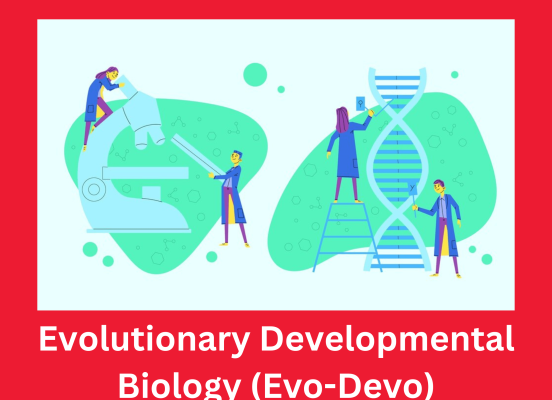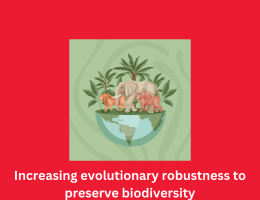
Evolutionary Developmental Biology (Evo-Devo)
- By admin --
- Tuesday, 12 Mar, 2024
Evolutionary Developmental Biology (Evo-Devo) represents an interdisciplinary field that integrates concepts from developmental biology and evolutionary theory to elucidate how changes in gene expression and regulation influence the development of phenotypic traits and contribute to evolutionary change. By exploring the intricate mechanisms underlying the development of organisms and their evolutionary trajectories, Evo-Devo provides valuable insights into the diversity of life on Earth.
At the heart of Evo-Devo lies the concept of development, the process by which a single fertilized egg gives rise to a complex organism through a series of coordinated cellular events. Development is orchestrated by the precise regulation of gene expression, which dictates the formation of specific tissues, organs, and body structures. Changes in gene expression patterns during development can lead to phenotypic variation, influencing traits such as morphology, physiology, and behavior.
One of the central questions in Evo-Devo concerns the origins of phenotypic diversity and the genetic mechanisms underlying evolutionary change. Traditional evolutionary theory focused primarily on changes in gene frequencies within populations over time, largely overlooking the role of development in shaping phenotypic variation. Evo-Devo, however, emphasizes the importance of developmental processes in generating novelty and diversity, highlighting the interplay between genetic variation and environmental factors in driving evolutionary change.
A key concept in Evo-Devo is the notion of developmental modules, discrete units of development that contribute to the formation of specific traits or structures. These modules, which can range from individual genes to entire gene regulatory networks, interact in complex ways to produce the final phenotype of an organism. Changes in the regulation or expression of developmental modules can lead to the evolution of novel traits or the modification of existing ones, driving phenotypic diversification.
One of the hallmark discoveries in Evo-Devo is the conservation of developmental pathways across diverse taxa. Despite the vast differences in morphology and ecological niches observed in the natural world, many fundamental aspects of development are remarkably conserved among organisms. For example, the genetic toolkit responsible for patterning the body axes and appendages is shared among diverse animal species, from fruit flies to humans. This conservation of developmental genes and pathways suggests that changes in the regulation of these genes can have profound evolutionary consequences, leading to the evolution of morphological diversity.
In addition to the conservation of developmental pathways, Evo-Devo also highlights the role of gene duplication and divergence in generating phenotypic novelty. Gene duplication events can create redundancy in the genome, allowing one copy of the gene to retain its original function while the other copy undergoes evolutionary experimentation. Over time, the duplicated gene may acquire new functions through neofunctionalization or may diverge in expression pattern or regulation, leading to the evolution of novel traits or developmental processes.
The study of model organisms has been instrumental in advancing our understanding of Evo-Devo principles. Model organisms such as fruit flies (Drosophila melanogaster), nematodes (Caenorhabditis elegans), and zebrafish (Danio rerio) offer tractable experimental systems for investigating the genetic and molecular basis of development. By manipulating gene expression, studying mutant phenotypes, and tracing developmental trajectories, researchers can unravel the underlying mechanisms driving evolutionary change.
Furthermore, comparative studies across divergent taxa provide valuable insights into the evolution of developmental processes and the origins of phenotypic diversity. By comparing the developmental trajectories of closely related species with different morphologies or ecological adaptations, researchers can identify genetic changes underlying evolutionary divergence. For example, comparative studies of stickleback fish have revealed the genetic basis of skeletal adaptations to different aquatic environments, shedding light on the mechanisms driving adaptive evolution.
The field of Evo-Devo has also elucidated the role of regulatory elements such as enhancers and transcription factors in modulating gene expression patterns during development. Changes in the activity or binding sites of these regulatory elements can lead to alterations in gene expression, influencing the development of specific traits or structures. For example, changes in the regulation of the gene Pitx1 have been linked to the evolution of pelvic reduction in stickleback fish and hind limb loss in snakes, highlighting the importance of regulatory evolution in shaping morphological diversity.
In conclusion, Evolutionary Developmental Biology (Evo-Devo) provides a powerful framework for understanding the genetic and developmental mechanisms underlying phenotypic diversity and evolutionary change. By examining the interplay between development and evolution, Evo-Devo offers valuable insights into the origins of novelty, the conservation of developmental pathways, and the role of regulatory evolution in shaping the diversity of life on Earth. Through integrative approaches that combine molecular genetics, developmental biology, and comparative genomics, Evo-Devo continues to illuminate the intricate processes driving the evolution of biological complexity.





